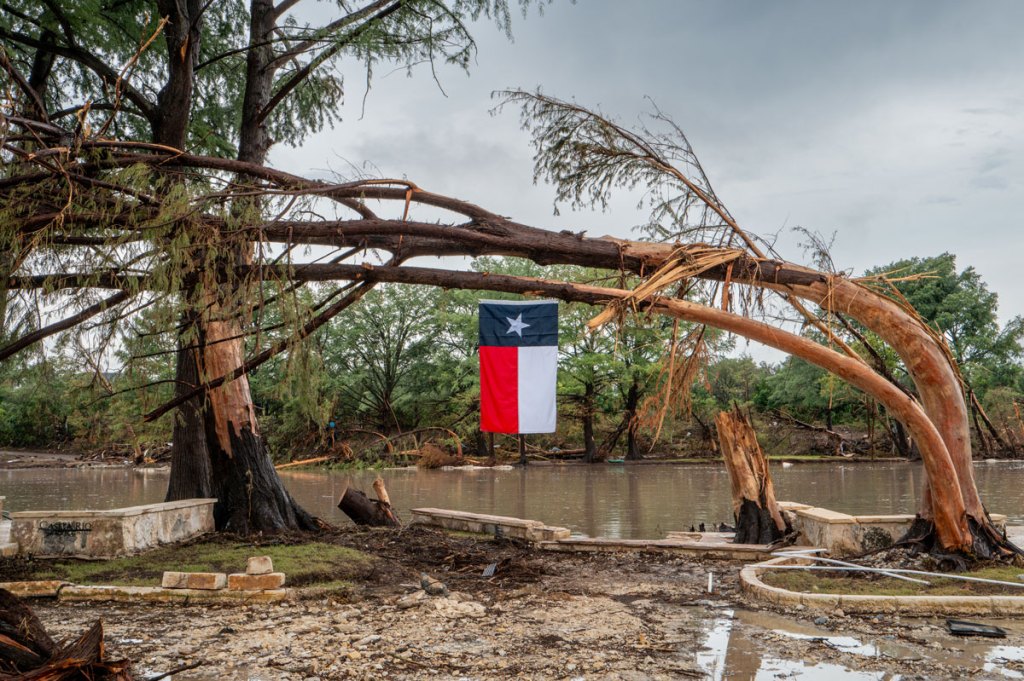To receive Morning Links in your inbox every weekday, sign up for our Breakfast with ARTnews newsletter.
The Headlines
ART WORLD RALLIES AFTER FLOODING. Flash flooding over the July 4 weekend in Texas claimed at least 137 lives, devastating the Hill Country region between Austin and San Antonio. The area, known for its scenic rivers, limestone cliffs, and iconic bald cypress trees, has long inspired artists, including Texan Impressionist painter Julian Onderdonk. As the Art Newspaper reports, Kerrville, a town of roughly 25,000, bore the brunt of the destruction. Darrell Beauchamp, executive director of the city’s Museum of Western Art , was jolted awake in the early hours of Independence Day by the sound of rescue efforts. He rushed out to assist and found emergency crews evacuating elderly residents as the Guadalupe River burst its banks in a heartbeat. In the days after the disaster, Beauchamp and his staff joined a volunteer search group walking along the river. “You’re looking for bodies, obviously,” he said; amid the destruction were “things that get swept when people’s houses and buildings get washed away.” Located on high ground, the Museum of Western Art’s collection was unaffected, but Beauchamp still felt support from neighboring cultural institutions. “I was pleased with the people in the art world who called, texted and emailed to ask if we were okay, if we needed any help,” he said.
Related Articles

‘ART RISKS AND REVOLTS.’ The debate about the pros and cons of art marrying technology rages on. It was given a big stage at Christie’s 10th Art + Tech Summit in New York earlier this month, and the auction house was has now published the “most thought-provoking soundbites” from the event. Big names from art and sports joined leaders from Apple, NVIDIA, the Metropolitan Museum of Art, the NFL and more for the two-day summit at New York’s Radio City Music Hall, sharing their unfiltered insights on the future of technology and culture. Here is a sampling:
“Over the last 10 years, we’ve seen a thousand ‘x’ computational speed. A thousand x. The prediction is another thousand ‘x’ in the next five years. Things will be very different when we do this in 2030. So how do we keep up? We keep up by getting together and embracing technology and learning from one another in the room.” —Devang Thakkar, global head of Christie’s ventures
“We artists ask: What is beyond reality? Which is an annoying question for scientists because they design systems that are so grounded and scientifically perfect. But when artists start touching these tools, they change. I hope this type of collaboration will allow us to explore those challenging questions that break the systems and imagine new ways of thinking.” —Rekik Anadol, digital artist
“AI is a new medium, which doesn’t happen very often in art. And like any medium, it’s going to take a minute for it to sink in and absorb. As a tool, it enables you to do things that were hitherto not possible.” —Bennet Miller, filmmaker and artist
“I love technology. It helps me navigate the world. But being in awe of tech doesn’t mean I’m going to surrender to it. As much passion as I have for it, I do not trust it with my soul. AI is trained to avoid error. Art is born from it. AI learns from what has already been. Art creates what never was. And while AI replicates and refines, art risks and revolts.” —David Droga, CEO of Accenture Song
The Digest
With most of the art world broken up for the summer, there’s no better time to pick up an arty book to read beachside, like a “self-aware art world satire” or something “meaty and memorable.” [Art Basel]
Miu Miu is set to return as the official partner of the Art Basel Paris’s public art program in 2025. As part of its contribution, the fashion house will debut 30 Blizzards, a new performance-based commission by British artist Helen Marten. [Artsy]
Time Outlooks at the top 43 art museums in the US. [Time Out]
The seven recipients of the Loewe Foundation / Studio Voltaire Award’s third edition have been announced. They include the painter and drag performer Lulu Bennett; installation artist Chaney Diao; photographer Jesse Glazzard; and artist and writer Taey Iohe. Each awardee will receive a £5,000 ($6,700) grant, a workspace at Studio Voltaire in London, a mentoring and professional development program, curatorial and pastoral support, and benefit from public events programming. [Art Review]
Frieze Sculpture—a fixture of the London art calendar—will return to London’s Regent’s Park in September, with works by 14 artists including pieces by late Native American artist Jaune Quick-to-See Smith and Delhi-born Reena Saini Kallat. The 13th edition runs from September 17 to November 2, coinciding with Frieze London and Frieze Masters (October 15–19). All featured works will be for sale. [Frieze]
The Kicker
‘ART WILL HELP YOU SURVIVE.’ At 66, Pavlo Makov, a prominent Ukrainian artist, could have chosen to leave his war-torn country. Instead, he remains in Kharkiv—his hometown, just 18 miles from the Russian border—despite nightly missile attacks, the Guardian reports. Kharkiv has adapted, with cultural life now taking refuge in basements and ground-floor spaces. Makov and his wife stay despite the dangers, relying on earplugs and faith to survive the nights. Initially fleeing to Italy in 2022, Makov found exile more disorienting than the war. “I realised I was losing my senses,” he said. Returning to Kharkiv, he found purpose again and renovated a new, safer studio. “On [his] easel is a large, bold new drawing in vivid shades of emerald and orange – a departure for Makov who, for years, has worked mostly in highly intricate monochrome prints and graphite pencil,” the paper writes. Makov said the work encapsulates “exactly how I feel myself now: a bit ruined but still alive.”

